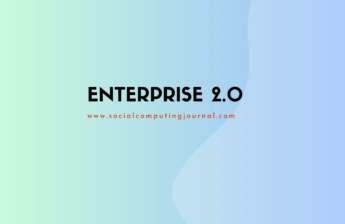During the last few weeks I have been engaged in a number of discussions about different aspects of the concept of Enterprise 2.0 in the aftermath of the June 2009 Enterprise 2.0 conference here in Boston.
People are coming at this from all kinds of angles and I assume that reflect their professional experiences within areas like Enterprise Content Management (ECM), Customer Relationship Management (CRM), Enterprise Resource Planning (ERP), Knowledge Management (KM), Business Process Management (BPM), Project Portfolio Management, (PPM), Innovation Management (IM) and other such classifications of different aspects of what makes an organization function. AND now we have a new classification with Enterprise 2.0 that we are trying to define.
Each one of these classifications or disciplines has its own set of “magic quadrant” constructed by research firms to assess vendor solutions and “hall of fame” defined by (vendor) associations and Enterprise 2.0 is probably not far behind.
Much discussion was about breaking down the corporate silos to further adoptions of social media tools to improve overall communication. But to quote Paula Thornton — “there is an issue greater than adoption at play here: hesitation to recognize the breadth and depth of adaptation that needs to occur across the entire enterprise and every aspect of the business model.”
Similarly Fred Zimny states: “many business decision makers who decide to dive into the E2.0 sea, often come back more confused than they were before taking that dive. AIIM’s year-old survey, which found that 74% of surveyed organizations had no idea what E2.0 meant or how it could be meaningfully applied, likely would’ve come back with a similar numbers today.”
Carl Frappaolo has weight in on the discussion about the use of collaborative social technologies in an Enterprise 2.0 setting and if such information will be considered subject to legal discovery — “a class action suit regarding patient/individual privacy rights, the courts ruled that content in “; FaceBook, MySpace, instant-messaging threads, blog posts and whatever else the plaintiffs might have done online”; was discoverable. The plaintiffs’; objection that this violated the plaintiffs’ privacy was shot down. These tools and their content were viewed as public, not on a private network, but the public world wide web.” And later “You should not have a different management policy for e-mail, or blogs, or microblogs. The medium or format should not dictate policy (other than acceptable use of the tool of course). It is the content that matters no matter what format or tool it was created in.”
I could not agree more — all content is legally material, so you better find a way to manage the exchanges of information regardless of the medium!
This leads me to what I see as the essence of Enterprise 2.0: We are looking for a way to manage the unstructured information that flow along a time-line for projects and business processes alike.
To me most business processes have the same issues as projects except they do not have a final end date. Projects and processes deal with people collaboration along a time-line with milestones and deadlines towards a measurable goal.
This information exchange is happening within teams, between corporate silos and often includes vendors, sub-contractors and customers.
ERP, CRM and other legacy systems have evolved over the last 20-30 years to manage an organization’;s structured information — General Ledger, Receivables, Payables, Budgeting, Billing, Inventory Control, Distribution, Purchasing, Time Sheets and Expense Reports, Support, Sales and Marketing, Human Resources and other classifications depending on industry.
Corporate silos have evolved to provide specialized knowledge and accountability for different aspects of what makes an organization function.
Take the case of a project based organization like an advertising agency or similar consulting firm — they make money or lose money depending on how well they manage the scope definition of their projects (assuming they are competitive in the market place).
The scope definition is tied to a contract describing the products and services to be delivered to a client over a time period with given assumptions. Scope definition and assumptions most often changes as the project progresses and thus the need for efficient communication between all stakeholders to amend projects and contracts.
Corporate silos in larger organizations will be re-invented to take advantage of Enterprise 2.0 and it is OK!
The CFO (Finance Department) will still exist and wanting to control (credit check at a minimum) when a prospect presented by Sales and Marketing can be defined as a potential customer and pre-sales team members can start reporting time and expenses toward that “customer”.
For advertising agencies up to 10% of total cost is often pre-sale cost. Once a customer contract is signed and budgets for cost and resources are approved the CFO will then approve the project for the project team to start reporting billable time and expenses to that account.
Changes to project scope will be reflected in changes to project timeline (most often) as well as resources (people, material, sub-contractors, etc.) required.
This will involve the legal department for amendments to the contract as well as Finance and potentially Human Resources.
Enterprise 2.0 done right will help provide better scope management by organizing the flow of unstructured information between stakeholders. In other words “getting the job done” and at the same time facilitate that possible regulatory compliance is adhered to and eDiscovery can be achieved at reasonable cost.
In a legal sense ALL project information exchange is material and we better plan for that without creating new barriers for “getting the work done” — that is the challenge for Enterprise 2.0 as the concept evolves.

